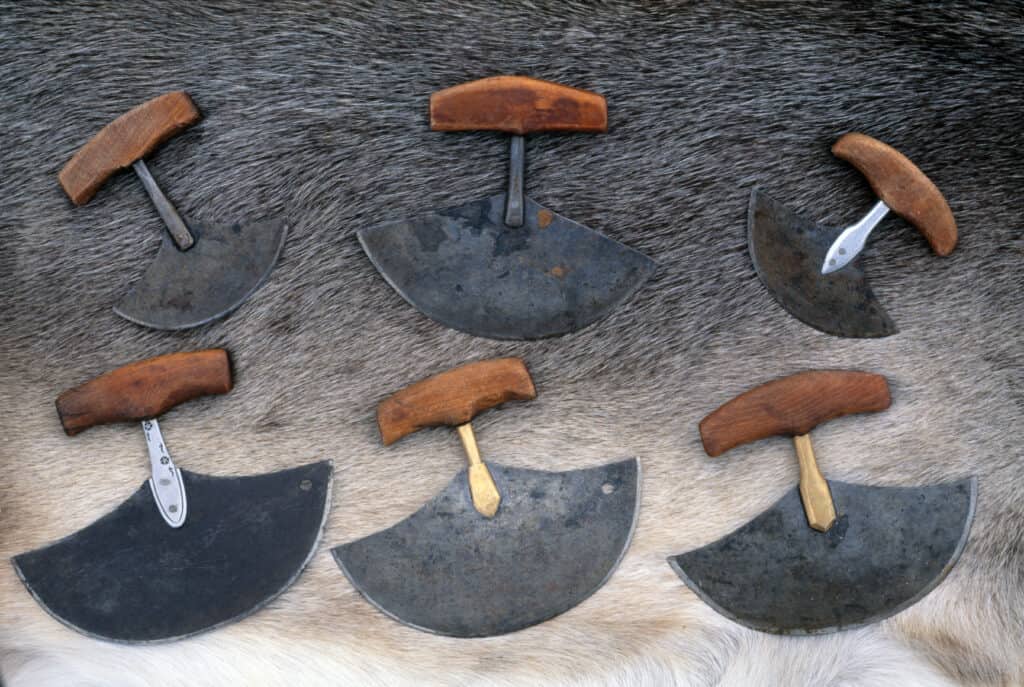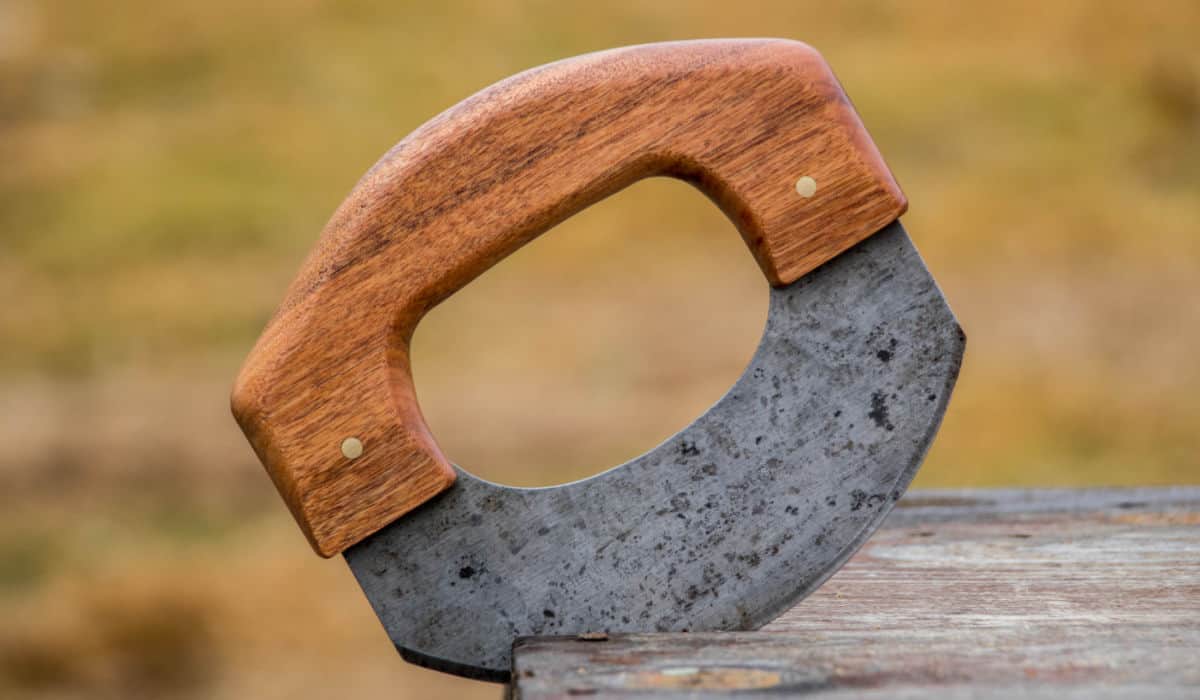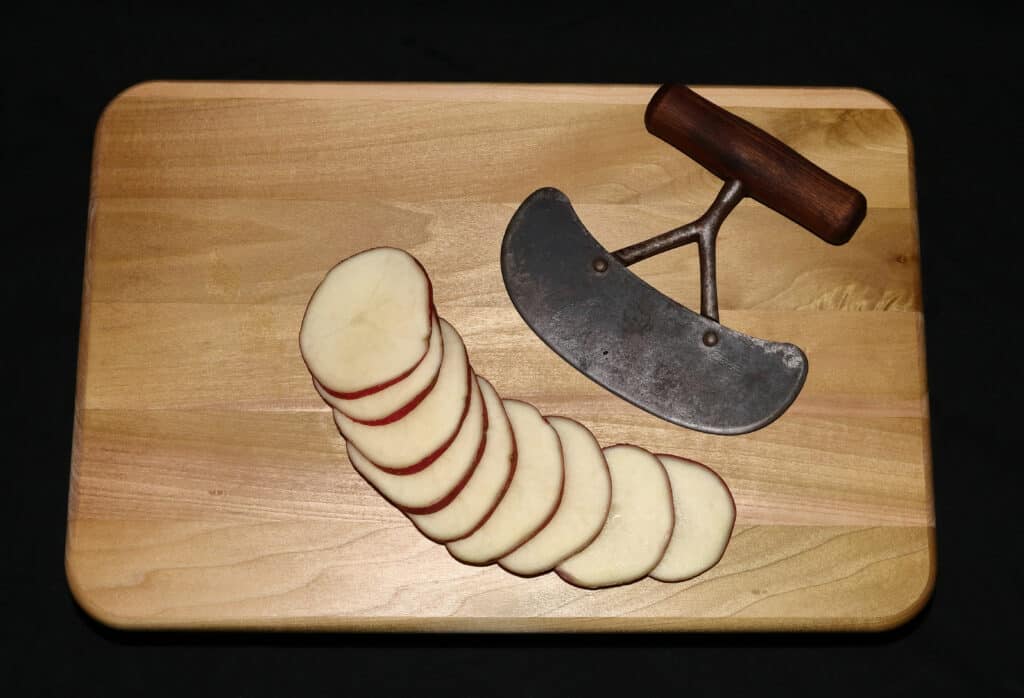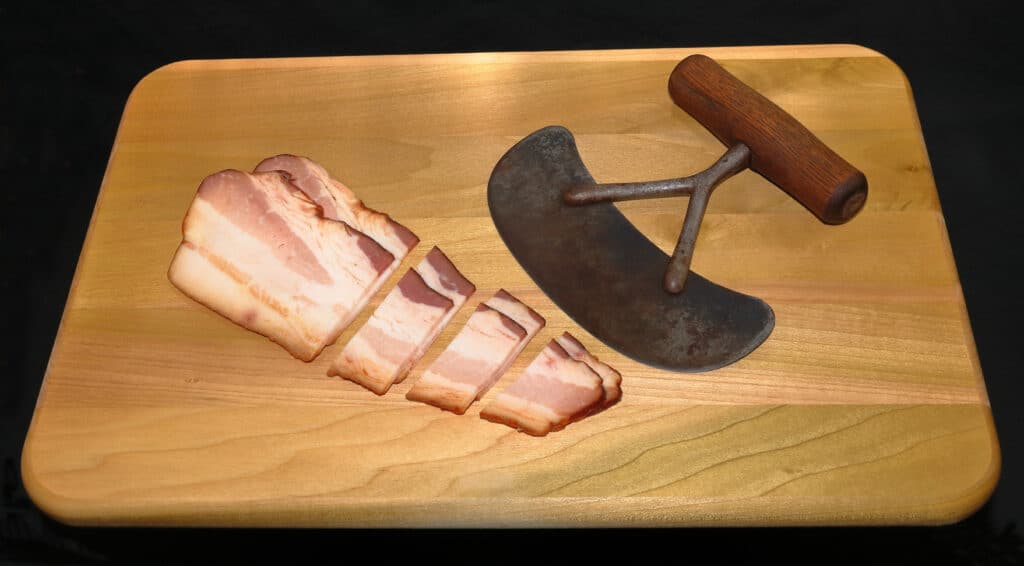Last updated on May 26th, 2023 at 08:01 pm
As an Amazon Associate I earn from qualifying purchases.
If you’re anything like me, you go out and buy every new type of knife you hear about. At least you do if your wife isn’t watching the bank account too closely.
So imagine my excitement when I heard of an “eskimo knife” called an Ulu that, apparently, was a must-have for my kitchen.
So I got one. However, here are a few things I learned about along the way.
In short, the Eskimo Knife, or the ‘Ulu,’ is one of the unique knives found on the globe. So let’s talk about what an Ulu is and how they are used.
What Is An Ulu Knife?
So, what is an Ulu? Well, it’s not a tool made for one specific use. You can use it as a cutting tool for multiple purposes. It comprises a blade that’s shaped semi-circular and has a strong handle. The handle allows us to grip the knife tightly while using it, without fearing it slipping.
The Inuit women love the Ulu as it’s a part of Native Alaskan culture for thousands of years.
Those who use it claim that it’s better than a standard knife more many reasons. Apparently it’s more efficient, more versatile, and more durable.
Because of it’s unique shape that allows the user to use it by pressing downwards directly on the tool, people find they tire less quickly if they’re doing a longer task (such as cutting up a reindeer?).
It’s a knife that wears ivory, shale, quartzite, slate, wood, and bones, depending on the manufacturer. The crescent shape of the blade allows the steel to tighten against the wood and stay attached. The knife is also relatively thin making it useful for kitchen tasks such as slicing and dicing.
Ulu Knife History

The Eskimo Knife or the Ulu, a popular friend from the Alaskan native Inuit community and dates back to somewhere between 3,500 to 5,000 years. There are still traditional knives made in Alaskan communities (as well as many antique examples) but modern manufactures have also taken to creating knives in the Ulu shape.
Ulu is a shorter version of the name “uuluuraq”, and this directly translates to “a woman’s knife”. I bought one anyway.
These knives have been used to do every kind of task from shaving kindling to chopping up whale blubber. So I figured any task I had for it wouldn’t be novel.
The ulu knife is an essential tool and historic symbol of the Inuit people. This traditional harvesting knife has been used for thousands of years to provide food, process hides and craft tools.
It’s said that its shape mimics the curves of a woman’s body, representing fertility and growth within the community.
Ulu Knife Chemistry
Originally, Eskimo knives were made from stone or antlers and held together with strips of sinew. These days, an ulu blade is now typically made from steel or other metals like copper, nickel and silver.
While the modern version remains mostly rooted in its ancestral design, it has evolved over time to meet the needs of contemporary users – such as hunters and campers – by including safer handles and modern materials like plastic. Regardless of its construction, the ulu remains an important cultural symbol that honors the Inuit lineage while providing utility in daily life.
What Is An Ulu Used For Traditionally?
Now you’re done finding out about the knife and its use, as well as how long it’s been around. The people who have experienced daily Ulu use are often familiar with making things with it. They simply press down their strength on the knife and begin cleaning skins, making clothes, cutting hair, trimming blocks of snow, and filleting fish.
There is also a wide variety of activities in the community that involve using the Ulu. In the central lives of Inuits, the word ‘Ulu’ and ‘tool’ are the same. Whether a Russian Aleut or an Alaskan Yupik, the word ‘Ulu’ plays a huge role in all the diverse lives and communities of people from the north.
Inuits are also known to live around north Canada regions, west of Greenland, and other colder regions.
With the help of an Ulu, the Inuit women skin animals and cook their family’s dinner. In many regards it fulfills both the function of a chef’s knife, hunting knife, and garden knife.
Is An “Eskimo Knife” Useful These Days?
Ulu Knives and their design have the ideal shape and size that has resulted in them becoming a household importance of the kitchen. There are many types of cutting tools, and of various price ranges, that can be found both online and offline. Commercially-produced Uluit is made with a steel blade, along with the handle made from birchwood, silicone rubber, or caribou antler.
The above knife if one that I bought used and, while it doesn’t have the classic Ulu-shape, it performs the exact same function.
Even if you are inexperienced in cooking (as I am), the Ulu can be used with versatility. It is uber-utilitarian and can mince veggies, slice pizza, cut meat, dice vegetables, and even chop nuts.
The knife’s strength, when it comes to cutting and slicing, emerges from the handle itself. The force from the Ulu, drives through the blade and directs itself into the good being sliced. The triangle-shaped blade has a bottom that’s round and easy to cut, using a rocking motion to pin the item down.
Caring For You Ulu Knife (Cleaning & Sharpening)
How To Sharpen An Ulu Knife
By now, you probably know that all knives require some sharpening to work optimally. Ulu Knives are no stranger to this concept.
The edge is bevel-shaped, and only this side of the edge should be sharpened. If you have no tool to sharpen it, a wet stone or even sandpaper will help in the same way. Just be sure not to apply too much pressure as you are not trying to have it razor sharp.
How To Clean An Ulu Knife
Whether you buy a commercial Ulu or one that’s traditionally made by locals, it’s never a great idea to place the knife in your dishwasher. Usually, hand washing with a little warm water will do the trick. However, it would be best if you were careful of the sharp blade while hand washing it. To ensure that it remains in its best state, apply a little oil, either vegetable or mineral, on the handle.
Conclusion
So am I happy that I bought an Ulu? Well, I don’t think I’ve ever answered that question negatively unless I feel like I overpaid for something.
Since I was able to support a local seller and get a used knife for a song I’m absolutely thrilled with my new knife and how it functions in my kitchen! Although I admit I haven’t gotten around to skinning anything with it yet..
Do Sheepsfoot Blades Have A Purpose? (Cuz They’re Ugly…)
Spetsnaz Machetes – Blades Of The Russian Special Forces
What Is The Actual Purpose Of A Spear Point Knife Blade?
CRKT CEO Review – Coolest, Most Worthless Knife Ever?
How Sharp Is A Scalpel? (Is It Sharper Than A Razor?)
Can You Shave With A Knife? (Yes, Here’s How)
As an Amazon Associate I earn from qualifying purchases.










